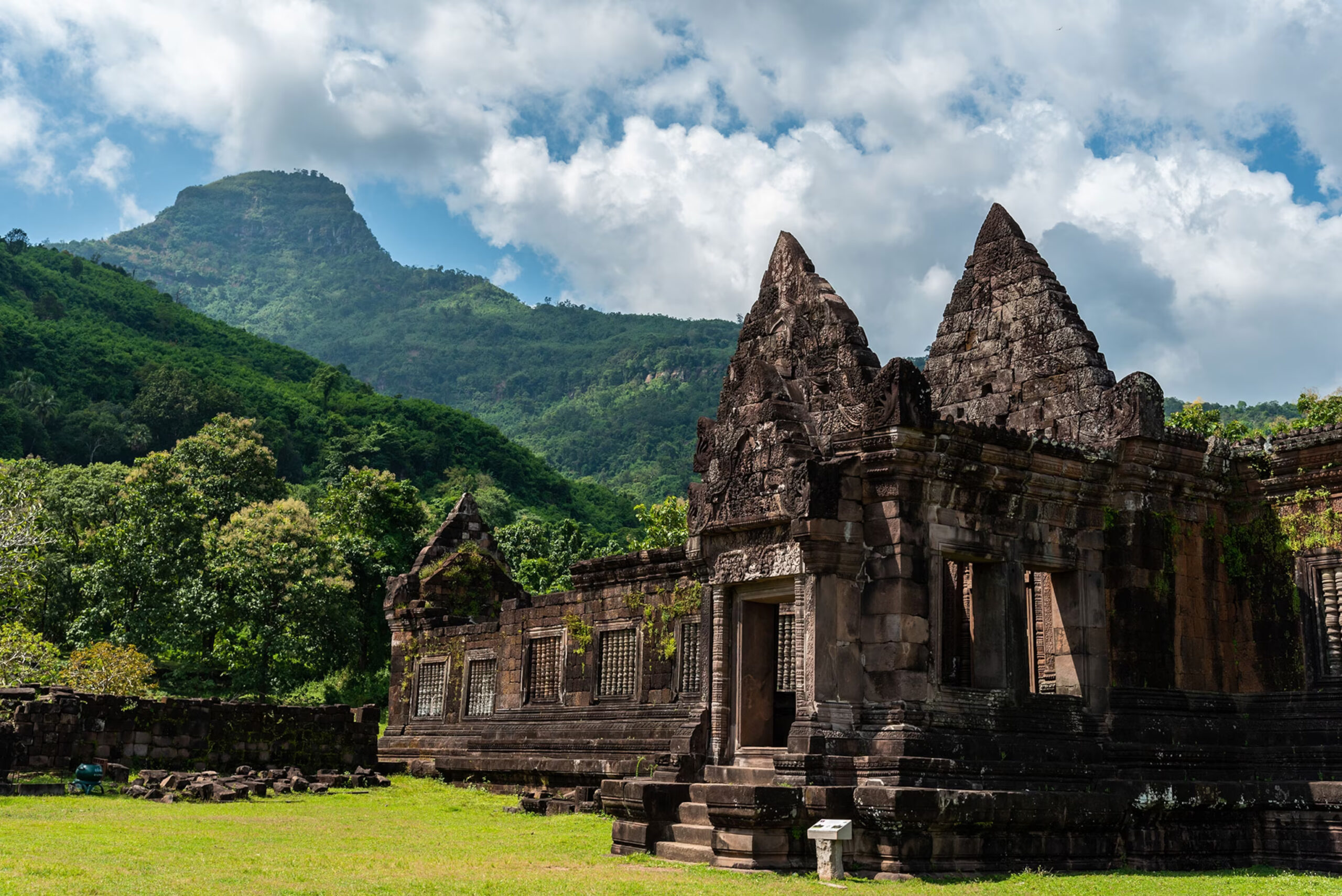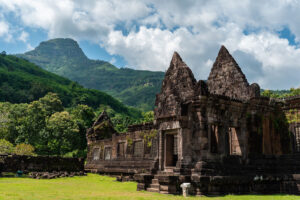
Vat Phou temple complex in Laos rivals Cambodia’s Angkor Wat — without the crowds
With stone ruins near a natural spring, the sprawling Vat Phou temple complex is a less visited archaeological wonder in Southeast Asia.
By Rachna Sachasinh
With its lotus-filled reservoirs and carved stone pillars, Laos’ Vat Phou temple bears a striking resemblance to Cambodia’s Angkor Wat—except for the crowds. Whereas Angkor draws some six million tourists a year, Vat Phou remains rarely visited and transcendentally serene.
The two sites, built as religious centers during the Khmer era, from 802 to 1431 A.D., are located along the Ancient Angkor Road, one of several medieval tracks that radiated from the seat of the Khmer Empire in Siem Reap (where Angkor is). Both are recognized as UNESCO World Heritage sites.
Though most of its stone ruins date to the 11th and 13th centuries, a fifth-century Sanskrit inscription and foundational structures found on the site indicate that Vat Phou predates Angkor Wat by hundreds of years and may be Southeast Asia’s oldest site of worship.
How to visit Vat Phou temple
Four miles outside of the town of Champasak—a sleepy one-road hamlet of weathered French colonial mansions and wooden bungalows—Vat Phou straddles Lingaparvata (Linga Mountain), named for its phallus-like summit. It’s a shape associated with Shiva, the creator and destroyer of the Hindu cosmos.
The complex’s construction and history spans hundreds of years, although its origin story remains cloudy. Local lore holds that King Kammatha—a ruler in the first millennium A.D.—built the first sanctuary here after mythical ogres demanded he give them his daughter, Nong Sida. A small temple with an elaborately carved stone pavilion and a hidden library named after the princess sits less than a mile to the east.
Read More: https://www.nationalgeographic.com/travel/ar
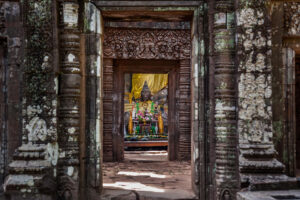
PHOTOGRAPH BY PEACE PORTAL PHOTO, ALAMY
ticle/ancient-laos-temple-rival-angkor-wat

PHOTOGRAPH BY CHOKNITI-STUDIO, SHUTTERSTOCK
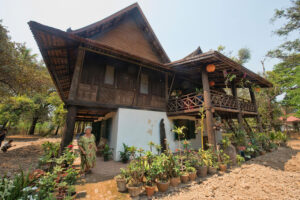
PHOTOGRAPH BY DAVE STAMBOULIS, ALAMY
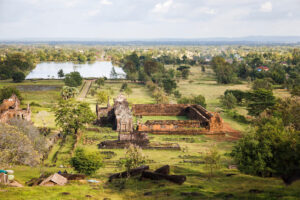
PHOTOGRAPH BY GRAHAM PRENTICE, ALAMY
